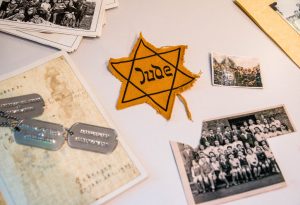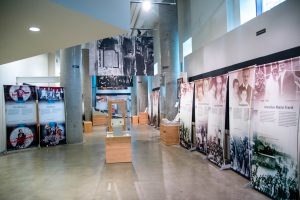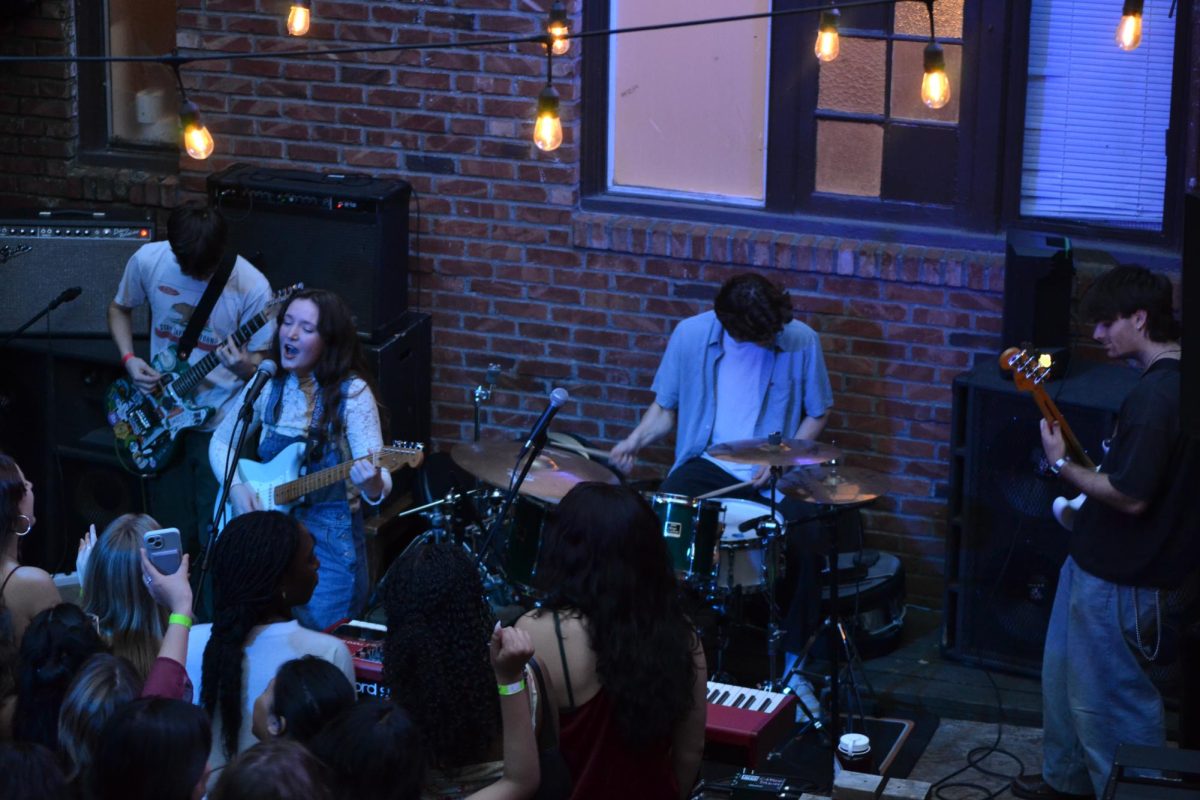The walls of the room were clean, pristine, white, empty. Everything was bare. Inside, stand-up banners covered with black-and-white photos and text lined up across the space.
Glass cases were spread throughout the room to showcase significant objects. One case was filled with rusty wire-rimmed glasses and worn-out brown shoes. Another had dark yellow patches in the shape of stars. A third had a red plaid diary: a replica of Anne Frank’s personal diary.

This room is currently on display in the Holocaust Center for Humanity’s exhibition, “Anne Frank: Let Me Be Myself,” in downtown Seattle. Seattle is the first stop for the North American exhibit premiere.
Through the use of film, pictures and a guided tour, this exhibit focuses on the life of Anne Frank, from her birth to her death in a Nazi concentration camp. In telling her story, the exhibit draws a powerful connection to the treatment of people today.
“Anne was one word to the Nazis: Jew,” Masu Sasajima, a tour guide for the center, said. “But she was more than that. Anne liked the color red. She ice-skated. She quarreled with her mother and adored her father.”
Throughout the exhibit, pictures of Anne Frank and facts about her life served as the main focus. At the beginning of the tour, attendees were given information about Anne Frank’s birth, family and the historical context of Europe at that time. It also gave detail to world Anne Frank grew up in, such as World War II, Hitler’s rise to power, and the treatment of Jews.
The tour followed a chronological order of events and ended with information, connecting the past to today.
Anne Frank was born in Germany into an upper middle class family.
However, after Germany lost World War I, Germany had to pay reparations causing the economy to plummet. As this was happening, the Nazis began to rise to power and blamed the Jews for the economic decline.
“In Germany, there were book burnings and mass restrictions of Jews. They couldn’t hold jobs,” Sasajima said.
To avoid the conflict in Germany, the Frank family applied to live in other countries, and eventually moved to the Netherlands. As life began to worsen for Jews in Germany, the effects had not yet reached the Frank family.
“After the war is declared, life in the Netherlands is the same. Anne wants to go ice-skating, so she goes ice-skating,” Sasajima said.

However, as time goes on, Anne and her family go into hiding. Eventually, they are caught and sent to concentration camps. The only member of the Frank family to survive the camps was her father, Otto Frank; Anne died of typhus while in the camp.
Remembering the life of Anne Frank was important to her father. It took Otto Frank quite a bit of time before he could read Anne’s diary, but once he did, he decided to publish it for the world to see and remember his beloved daughter.
The exhibit’s goal was not only for viewers to reflect on the past and learn its history, but to also allow the experiences of people like Anne to influence how people today should treat one another.
“We all have stereotypes. How fair is that?” Sasajima asked. “Do we allow ourselves to know more about people, or are we stuck with our first impression?”
Sasajima continued her questions with an example.
“If you met a man in a wheelchair with his body parts twisted, would you want to get to know him?
Then what if I told you he was one of the greatest physicists of the past century: Stephen Hawking?” she said.
The exhibit shifted from the focus of the Holocaust to present day by asking attendees how they felt being stereotyped and judged when people first see them.
Although Anne Frank was only known as a Jew to the Nazis, she had traits, likes and dislikes that made her who she was.
Through her diary, Anne was able to be her true self.
In reflection of both past and present day stereotypes, Sasajima asked, “Why won’t others let you be you?”
Throughout the whole exhibit, a gloomy, but hopeful air filled the room.
Despite exploring a difficult task, people today can learn from the evil of the Holocaust in an attempt to make the world a better place.
Anne Frank: Let Me Be Myself is on display at the Holocaust Center for Humanity until May 30. The museum is opened on Wednesdays and Sundays from 10 a.m. to 4 p.m.
















































































